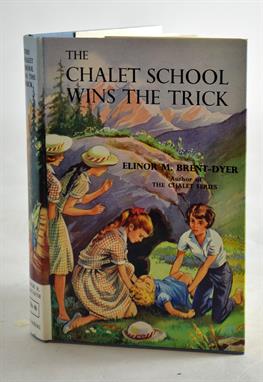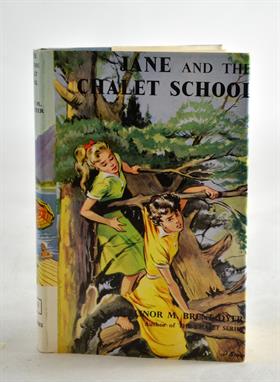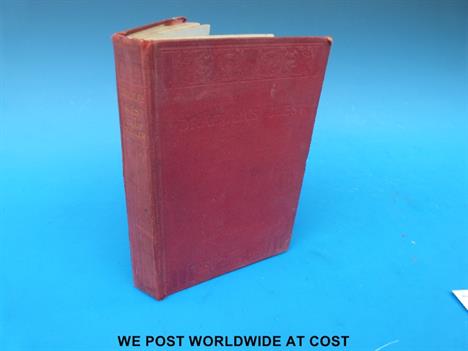We found 118894 price guide item(s) matching your search
There are 118894 lots that match your search criteria. Subscribe now to get instant access to the full price guide service.
Click here to subscribe- List
- Grid
-
118894 item(s)/page
Spurs Go Marching On` First Edition book signed to the flyleaf by the Tottenham Hotspur footballer John White (1937-64) Provenance: This book was given as a present by John White to Judith Harris who was a babysitter for the family as a Christmas present in 1963, John tragically died in July 1964
A leather bound 19th century Pictorial National Comprehensive Family Bible, Catalogue De Tableaux Anciens, published Paris 1890 together with various commemorative newspapers including a V-Day souvenir edition of the Sunday Graphic dated 9th June 1946, Severn Bridge souvenir supplement of the Bristol Evening Post, a 1960s edition of the Radio Times advertising the First Test England v South Africa, etc
A A MILNE "Winnie The Pooh", illustrated by Ernest H Sheppard, first edition, published 1926 by Methuen & Co., tooled and gilded blue leather bound CONDITION REPORTS Generally the condition is poor, with much wear and tear. There is pencil marks on some of the pages. All pages have marks and dirt patches on them, some small dots of ink. There are assorted minor tears on pages and some pages have a 'sticky like substance' on them. Most of the pages are loose and the bindings are not in great condition. The leather on the binding has disintegrated and much of it is missing.
Elinor Brent Dyer, Joey and Co. in Tirol, 1960, first edition, in clipped dw; and 25 other books by same author including hardbacks and paperbacks (26) A full list of the titles and publication dates in this lot are available from the auctioneer upon request Titles within this lot are as follows Hardbacks Joey and Co. in Tirol, 1960, first edition, price clipped dw; A Future Chalet School Girl, 1962, first edition, no dw; The Head Girl of the Chalet School, latest reprint 1960, no dw; The Chalet School and the Lintons, latest reprint, 1964, no dw; The Exploits of the Chalet Girls, latest reprint 1961, clipped dw; The Princess of the Chalet School, latest reprint 1963, non clipped dw; The New House at the Chalet School, latest reprint 1963, non clipped dw; The Chalet School in Exile, latest reprint 1961, clipped dw; Three Go to the Chalet School, latest reprint 1961, clipped dw; Peggy of the Chalet School, latest reprint 1962, non clipped dw; The Chalet School goes to it, latest reprint 1962, non clipped dw; Lavender Laughs in the Chalet school, latest reprint 1963, clipped dw; Gay from China at the Chalet School, latest reprint 1960, clipped dw; Jo to the Rescue, latest reprint 1960, non clipped dw; Joey Goes to the Oberland, latest reprint 1964, clipped dw; Paperbacks Mary-Lou at the Chalet School, 1956; Jo at the Chalet School, 1925; The Rivals of the Chalet School, 1929; The Wrong Chalet School, 1952; Carola Stories the Chalet School, 1951; The Chalet School and Jo, 1930; Jo Returns to the Chalet School, 1936; The Chalet Girl in Camp, 1930; A Genius at the Chalet School, 1969; The Chalet School and Island, 1950; The New Mistress at the Chalet School, 1957.
Collection of fourteen war and aircraft related books including Brickhill, The Dam Busters, pub. Evan Brothers Ltd, 1951, First Edition, in non clipped dw; Bates, The Stories of Flying Officer `X`, pub. John Dickens and Co, reprinted 1967, clipped dw; Draper, The Mad Major, pub Air Review Ltd, 1962, First Edition, signed by the author, non clipped dw; Rochester, The Black Hawk, pub. John Hamilton Ltd, undated, non clipped dw; Vee, Flying Minnows, pub. John Hamilton Ltd, undated, non clipped dw; Taylor, Knight of the Air, pub. Basil Blackwell, 1935, First Edition, non clipped dw; Wingless Victory: The Story of Sir Basil Embry`s Escape from Occupied France in the Summer of 1940, pub. Odhams Press Ltd, third impression November 1950, non clipped dw; Gibson, Enemy Coast ahead, pub. Michael Joseph Ltd, 1946, First Edition, no dw; Williams, The Escapers: A chronicle of escape in many ways with eighteen firsthand accounts pub. Eyre and Spottiswoode, 1953, non clipped dw; Young, Rommel, pub St James`s Palace, 1950, non clipped dw; Olley, A Million Miles in the Air, pub. Hodder & Stoughton Ltd, 1934 Millar, Horned Pigeon pub. by William Heinemann, January 1946, non clipped dw Maclean, Where Eagles Dare, pub. St James` Palace, 1967, non clipped dw Jenkins, A Twist of Sand, pub Geoffrey Jenkins, 1959, First Edition, non clipped dw (14)
Milne, A. A. `Winnie the Pooh`, First Edition, pub. Methuen and Co., London, 1926, illustrations by E.H. Sheppard, 7/6, 117th thousand dust jacket. * Condition: 1½in. (3.7cm.) mark to front, slight rubbing to edges, dark green boards with gilt vignette and ruled lined border, some slight "bubbling" just right of the spine to cover where book has had contact with damp, light discoloured triangular patch to top right (damp or acidity), gilt title to spine, 1¼in. (3.2cm.) column discoluration to map (where d/j has not been in contact), very fine condition interior. See Illustration
Macculloch, Sir Edgar `Guernsey Folk Lore`, first edition published by Elliot Stock, London 1903, "A collection of popular superstitions, legendary tales, peculiar customs, proverbs, weather sayings etc of the people of that island", edited by Edith F. Carey, green cloth boards with central Guernsey armorial, gilt lettering for title and author, bearing a photographic image of Sir Edgar Macmulloch in full ceremonial regalia. * Sir Edgar Macculloch was Bailiff of Guernsey 1884-1895, the position now being held by Mr Richard Collas.
William Douglas, Soldiering in Sunshine and Storm, A & C Black, London 1865, first edition, period binding of Morocco over marbled boards. Family gift inscription to recto of frontispiece portrait. A scarce military memoir including much information relating to Egyptian and Crimean campaigns.
[HUNTING] Meads, Frank. They Meet at Eleven, first edition, Newnes, London, 1956, taupe cloth, dustjacket, colour frontispiece and vignette illustrations by Lionel Edwards, further full-page black and white illustrations from photographs, quarto; and Meads, Jim. `They Still Meet at Eleven`, The Standfast Press, Tetbury, no date [1979], grey-brown cloth, dustjacket, colour frontispiece and vignette illustrations by John King, further full-page black and white illustrations from photographs, quarto, (2).
[HUNTING] Edwards, Lionel, & Wallace, Harold Frank. Hunting & Stalking the Deer. The Pursuit of Red, Fallow and Roe Deer in England and Scotland, limited edition 125/156, signed by both Edwards and Wallace, scarlet buckram, eight mounted colour plate illustrations including frontispiece, further black and white plate illustrations, large quarto (severly damp damaged, with incomplete covers); Fothergill, George A., Hunting, Racing, Coaching and Boxing Ballads, first edition, Heath Cranton, London, 1926, crimson cloth, dustjacket with pictorial onlay, colour frontispiece and a further sixteen monochrome plate illustrations, quarto; and a further four assorted works, (6). Note: This lot sold with all faults, not subject to return.
[HUNTING] Collins, George. History of the Brocklesby Hounds 1700-1901, first edition, Sampson Low, Marston & Co., London, 1902, scarlet cloth, photogravure and black and white plate illustrations, quarto; and Apperley, Charles. Nimrod`s Hunting Tours, Interspersed with Characteristic Anecdotes, Sayings and Doings of Sporting Men, limited edition of 500, Kegan Paul, Trench, Trubner & Co., London, 1903, pictorial green cloth gilt, eighteen colour plate illustrations including frontispiece, quarto (upper hinge tape-repaired), (2).
[HUNTING]. SCOTLAND Chalmers, Patrick. Mine Eyes to the Hills. An Anthology of the Highland Forest, Black, London, 1931, brown cloth, eight colour plate illustrations by V.R. Balfour-Browne, quarto; Crawford, J.H. From Fox`s Earth to Mountain Tarn. Days Among the Wild Animals of Scotland, first edition, Bodley Head, London, 1907, pictorial scarlet cloth gilt, seventeen black and white plate illustrations from photographs including frontispiece, sixteen-page publisher`s catalogue, quarto; and Mackenzie, Osgood. A Hundred Years in the Highlands, new edition, Bles, London, 1963, ten black and white plate illustrations including frontispiece, octavo, (3).
[HUNTING] Aldin, Cecil. Ratcatcher to Scarlet, third edition, Eyre & Spottiswoode, London, 1933, black cloth, full-page and vignette illustrations, quarto; Underhill, George. A Century of English Fox-Hunting, first edition, Everett, London, 1900, maroon cloth, colour frontispiece, quarto; Lynch, Stanislaus. Echoes of the Hunting Horn, first edition, The Talbot Press, Dublin, 1946, two-tone boards, illustrated by Olive Whitmore, octavo; and a further twenty-seven works, (30).
[HUNTING] Evered, Philip. Staghunting with the `Devon and Somerset` 1887-1901. An Account of the Chase of the Wild Red Deer on Exmoor, first edition, Commin / Denham, Exeter / London, 1902, crimson cloth gilt, black and white plate and vignette illustrations from photographs, quarto (joints torn; lower hinge weak).
[HUNTING] Baily`s Hunting Directory 1998-99, boards, illustrations, octavo; Board, John. From Point to Point, first edition, Johnson, London, 1953, blue cloth, plate and text illustrations, octavo; Bovill, E.W. The England of Nimrod and Surtees 1815-1854, first edition, Oxford University Press, London, 1959, cloth, dustjacket, plate illustrations, octavo; and assorted other works of hunting, horse-racing and general equine interest.
[SHOOTING] Willock, Colin. The Gun-Punt Adventure, first edition, Faber & Faber, London, 1958, green cloth, dustjacket, black and white plate illustrations from photographs, octavo; and Willock, Colin. The Bedside Wildfowler, first edition, Deutsch, London, 1966, boards, dustjacket, black and white plate and text illustrations, octavo, (2).
[SHOOTING] `B.B.` (Watkins-Pitchford, Denys). Tide`s Ending, first edition, Hollis & Carter, London, 1950, grey cloth, dustjacket, sixteen colour plate illustrations including frontispiece, further black and white vignette illustrations, quarto; and `B.B.` (Watkins-Pitchford, Denys). Dark Estuary, first edition, Hollis & Carter, London, 1953, dark red buckram, fifteen colour plate illustrations including frontispiece, further black and white vignette illustrations, quarto, (2).
-
118894 item(s)/page

































![[BINDINGS] ANATOLE FRANCE, Works. publ. Gabriel Wells, New York, 1924. 30 vols. Limited edition numbered set - this being num](http://lot-images.atgmedia.com/SR/34719/2905205/1235-20144483324_468x382.jpg)







![E F BENSON, Spook Stories. publ. Hutchinson, London, [1928]. FIRST EDITION. with other books including titles by Algernon Bla](http://lot-images.atgmedia.com/SR/34719/2905205/1309-20144484553_468x382.jpg)
![E W HORNUNG, The Black Mask. [a Raffles Novel]. publ. Grant Richards, London, 1901. FIRST EDITION. with other pre-war crime n](http://lot-images.atgmedia.com/SR/34719/2905205/1310-20144484557_468x382.jpg)






![[HUNTING] Meads, Frank. They Meet at Eleven, first edition, Newnes, London, 1956, taupe cloth, dustjacket, colour frontispiec](http://lot-images.atgmedia.com/SR/10066/2901850/606-2014321161028_468x382.jpg)
![[HUNTING] Armour, G.D. Humour in the Hunting Field, first edition, Country Life, London, 1928, two-tone brown cloth, twenty p](http://lot-images.atgmedia.com/SR/10066/2901850/607-2014321161030_468x382.jpg)
![[HUNTING] Edwards, Lionel, & Wallace, Harold Frank. Hunting & Stalking the Deer. The Pursuit of Red, Fallow and Roe D](http://lot-images.atgmedia.com/SR/10066/2901850/608-2014321161031_468x382.jpg)
![[HUNTING] Collins, George. History of the Brocklesby Hounds 1700-1901, first edition, Sampson Low, Marston & Co., London,](http://lot-images.atgmedia.com/SR/10066/2901850/609-2014321161033_468x382.jpg)
![[HUNTING]. SCOTLAND Chalmers, Patrick. Mine Eyes to the Hills. An Anthology of the Highland Forest, Black, London, 1931, brow](http://lot-images.atgmedia.com/SR/10066/2901850/615-2014321161042_468x382.jpg)
![[HUNTING] Aldin, Cecil. Ratcatcher to Scarlet, third edition, Eyre & Spottiswoode, London, 1933, black cloth, full-page a](http://lot-images.atgmedia.com/SR/10066/2901850/616-2014321161044_468x382.jpg)
![[HUNTING] Evered, Philip. Staghunting with the `Devon and Somerset` 1887-1901. An Account of the Chase of the Wild Red Deer o](http://lot-images.atgmedia.com/SR/10066/2901850/617-2014321161046_468x382.jpg)
![[HUNTING] Armour, G.D. A Hunting Alphabet, first edition, Country Life, London, 1929, cloth-backed boards, twenty-six mounted](http://lot-images.atgmedia.com/SR/10066/2901850/621-2014321161052_468x382.jpg)
![[HUNTING] Baily`s Hunting Directory 1998-99, boards, illustrations, octavo; Board, John. From Point to Point, first edition,](http://lot-images.atgmedia.com/SR/10066/2901850/622-2014321161053_468x382.jpg)
![[SHOOTING] Willock, Colin. The Gun-Punt Adventure, first edition, Faber & Faber, London, 1958, green cloth, dustjacket, b](http://lot-images.atgmedia.com/SR/10066/2901850/626-201432116110_468x382.jpg)
![[SHOOTING] `B.B.` (Watkins-Pitchford, Denys). Tide`s Ending, first edition, Hollis & Carter, London, 1950, grey cloth, du](http://lot-images.atgmedia.com/SR/10066/2901850/627-201432116111_468x382.jpg)